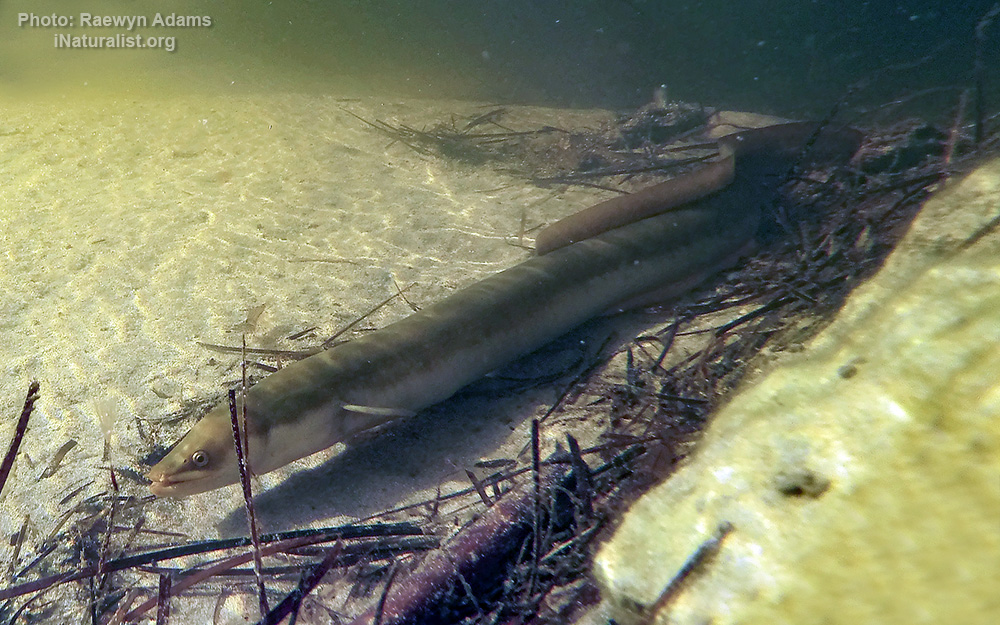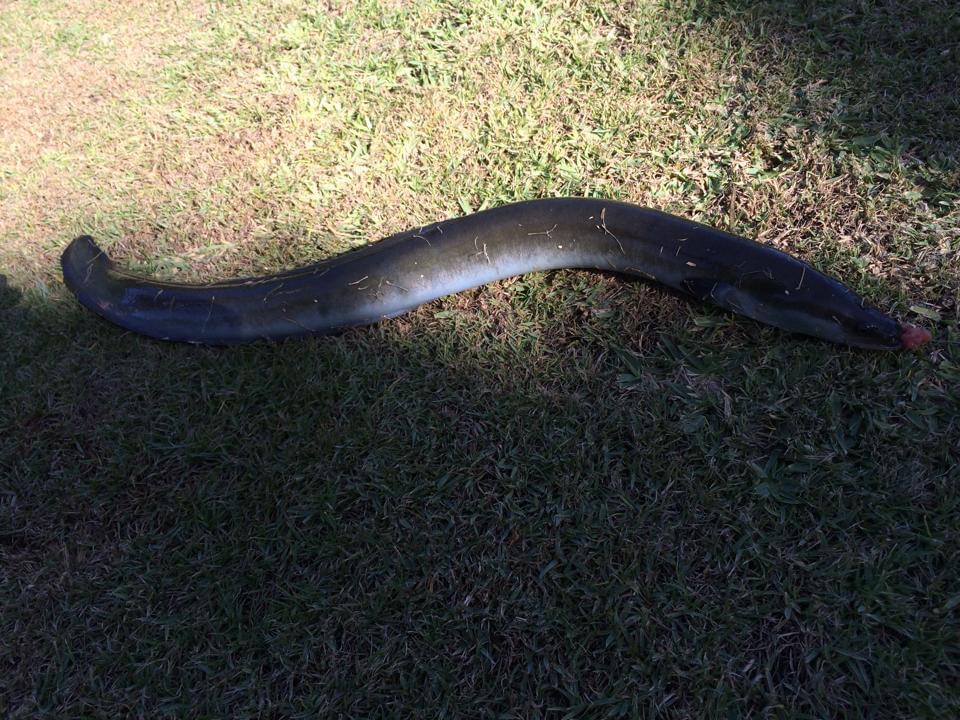Short-finned eel
(Anguilla australis)

Classification
General data
The short-finned eel (Anguilla australis), also known as the shortfin eel, is one of the 15 species of eel in the family Anguillidae. It is native to the lakes, dams and coastal rivers of south-eastern Australia, New Zealand, and much of the South Pacific, including New Caledonia, Norfolk Island, Lord Howe Island, Tahiti, and Fiji.
The body of the adult short-finned eel is long and snakelike, roughly tubular and the head is small, with the jaws reaching back to below the eye or further. The dorsal (top) and anal (bottom) fins are of roughly equal length.
The colour varies considerably from one individual to another; a deep olive-green is typical but it can be much lighter; golden or even (rarely) yellowish. There are no markings of note, but the underside is pale, often silvery, and the fins greenish. When full grown, they reach about 90 cm.
The short-finned eel has a typical regeneration time of 15 to 30 years for females and it reaches a maximum size of about 1.1 m and 3 kg. Males tend to be slower growing and reach a smaller adult size.
Anguillid eels are undifferentiated gonochoristic fish. This means that the sex of the animal is determined from an undifferentiated gonad. Differentiation then occurs and an eel becomes male or female, and this is generally correlated to the size (30 cm (12 in)) of the animal, not its age.
In Australia, they are restricted to the area on the seaward side of the Great Dividing Range, from about Mount Gambier in the south-eastern corner of South Australia, through Victoria, Tasmania, the Bass Strait islands, and up the eastern seaboard to the Richmond River in northern New South Wales. Unable to scale the Great Dividing Range, and not extending as far west as the outlet of the Murray River, they are excluded from the thousands of kilometres of waterways that drain inland eastern Australia.
During their life cycle however, eels migrate over huge distances to spawn.
They are carnivorous, and ferocious predators, eating crustaceans, fish, frogs, birds, snakes, and Australian native water rats (rakali).
Like the other anguillids, short-finned eels are catadromous: when they reach maturity, they stop feeding and migrate downstream to the sea, then anything up to three or four thousand kilometres to a spawning ground in deep water somewhere in the Coral Sea off New Caledonia.












